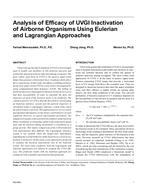This paper illustrates the effects of degradation in the coefficient of performance (COP) of an air conditioner caused by cyclic operations. This is demonstrated by considering a 1076 ft 2 (100 m2) residence in Dhahran equipped with a 5 ton (17.6 kW) central unit. A cornputer model estimates cooling loads and transient (start-up) losses. Simulations show cyclic losses can be as high as 24% during the months of low cooling when system on-time is minimal; little degradation was experienced during the hot months when the system on-tirne is high with fewer startstop cycles. This study found that annual steady-state energy consumption was 17,900 kWh; transient losses required an additional 2100 kWh. The total predicted value of 20,000 kWh is within 5% of the metered consumption. Cyclic losses can be reduced by design changes that prevent refrigerant migration during the off-cycle period, since this phenomenon is responsible for most start-up losses. Degradation may also be lowered by installing an inverterdriven, variable-speed air-conditioning system. Such a system has the ability to precisely match capacity with cooling load, resulting in few on-off cycles.
Citation: ASHRAE Transactions, vol. 95, pt. 1, Chicago 1989
Product Details
- Published:
- 1989
- Number of Pages:
- 7
- File Size:
- 1 file , 940 KB
- Product Code(s):
- D-24523


